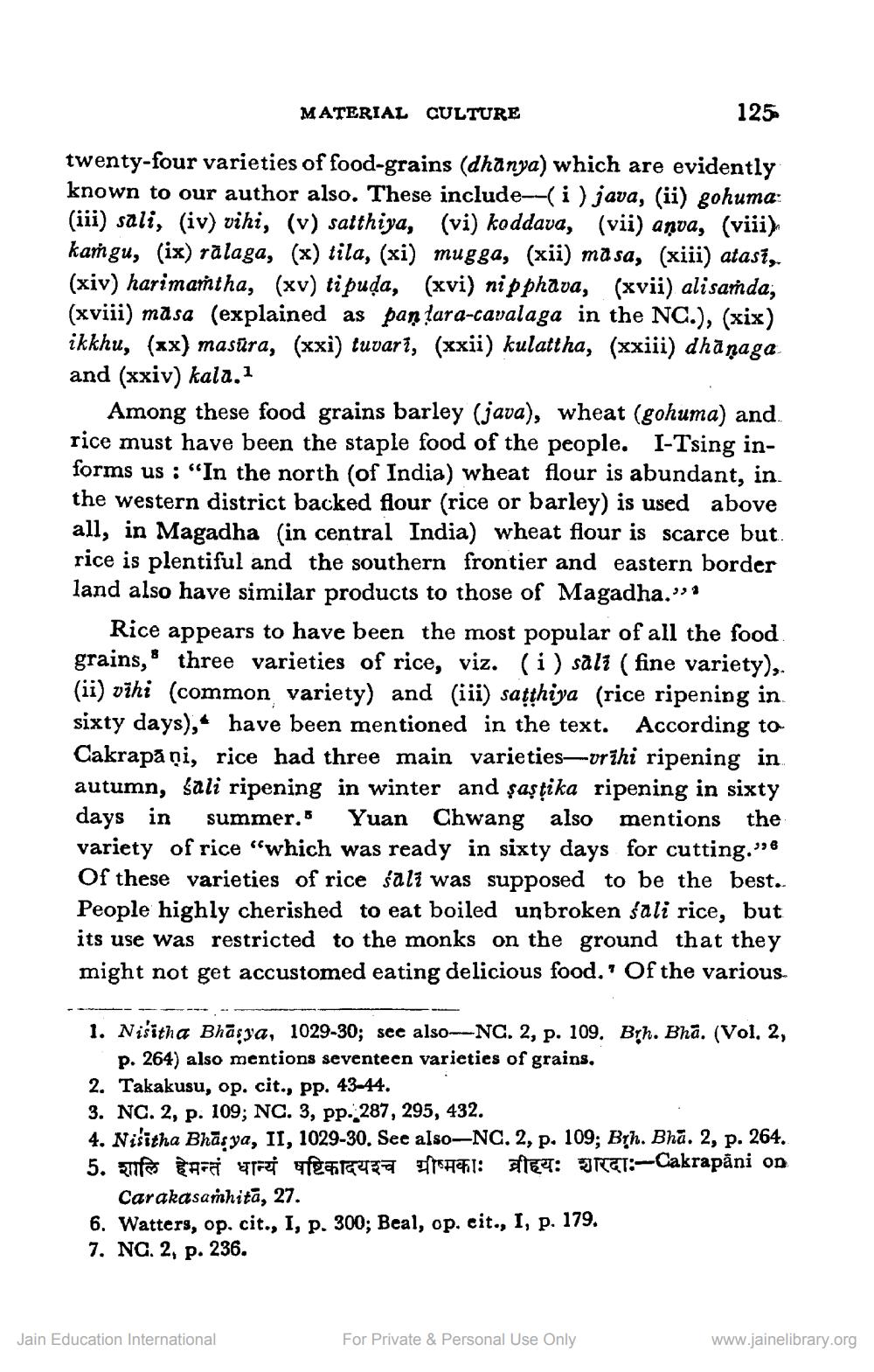________________
MATERIAL CULTURE
125
twenty-four varieties of food-grains (dhanya) which are evidently known to our author also. These include--(i) java, (ii) gohuma: (iii) sali, (iv) vihi, (v) satthiya, (vi) koddava, (vii) anda, (viii) kaņgu, (ix) rālaga, (x) tila, (xi) mugga, (xii) masa, (xiii) atasi, (xiv) harimaṁtha, (xv) ti puda, (xvi) nipphava, (xvii) alisaṁda, (xviii) masa (explained as pan lara-cavalaga in the NC.), (xix) ikkhu, (xx) masūra, (xxi) tuvari, (xxii) kulattha, (xxiii) dhānaga and (xxiv) kala. 1
Among these food grains barley (java), wheat (gohuma) and.. rice must have been the staple food of the people. I-Tsing informs us : "In the north (of India) wheat flour is abundant, in the western district backed flour (rice or barley) is used above all, in Magadha (in central India) wheat flour is scarce but rice is plentiful and the southern frontier and eastern border land also have similar products to those of Magadha.”
Rice appears to have been the most popular of all the food. grains, three varieties of rice, viz. (i) sāli ( fine variety), (ii) vihi (common variety) and (iii) satthiya (rice ripening in sixty days),- have been mentioned in the text. According to Cakrapāņi, rice had three main varieties—urīhi ripening in autumn, sali ripening in winter and şaşţika ripening in sixty days in summer. Yuan Chwang also mentions the variety of rice "which was ready in sixty days for cutting.” Of these varieties of rice sali was supposed to be the best.. People highly cherished to eat boiled unbroken sali rice, but its use was restricted to the monks on the ground that they might not get accustomed eating delicious food.: Of the various
1. Nišitha Bhāsya, 1029-30; see also--NC. 2, p. 109. Bịh. Bhā. (Vol. 2,
P. 264) also mentions seventeen varieties of grains, 2. Takakusu, op. cit., pp. 43-44. 3. NC. 2, p. 109; NC. 3, pp. 287, 295, 432. 4. Nišitha Bhāsya, II, 1029-30. See also-NC. 2, p. 109; Bịh. Bhā. 2, p. 264. 5. nfs CAF y feliz #1: DEY: RET:-Cakrapāni on
Carakasaṁhita, 27. 6. Watters, op. cit., I, p. 300; Beal, op. cit., I, p. 179. 7. NC. 2, p. 236.
Jain Education International
For Private & Personal Use Only
www.jainelibrary.org




